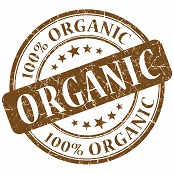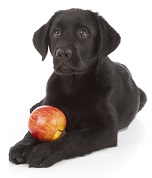 While the USDA may say that the only difference between “organic” and “conventional” food is the way it’s raised, and while Stanford University may have found little nutritional difference between their products, the public sees the two as vastly different approaches to the food supply. And it wants organic for the benefits it provides to their families, to their environment, and increasingly to their pets as well.
While the USDA may say that the only difference between “organic” and “conventional” food is the way it’s raised, and while Stanford University may have found little nutritional difference between their products, the public sees the two as vastly different approaches to the food supply. And it wants organic for the benefits it provides to their families, to their environment, and increasingly to their pets as well.
Over the last decade sales of organic food exploded six fold, and today two thirds of Americans occasionally buy organic even though, according to the USDA, that adds up to only a little over 4% of food sales, or about $35 billion in 2014.
Tellingly, demand is growing at a double-digit rate. The reasons are diverse and profound. People want healthier food and they want it from nature, not from science. They want food from smaller, labor-intensive farms that raise animals humanely and that grow crops naturally. They want food uncontaminated with herbicides, pesticides, hormones or antibiotics. And they want sustainable agriculture that nourishes the soil and improves the surrounding environment.
Americans understand that these methods are less efficient, but they’re willing to pay a premium for food from farms that provide a range of positive impacts – even though the desire for personal health is only one of them.
It should come as no surprise that Americans want to feed their pets organic food as well. Out of the $58.51 billion Americans will spend on their pets this year, about $22.62 billion will go to food – and the hottest trend is natural, organic, even human-grade pet food, according to an industry report. All the big names are making moves: “With Hill’s reformulating Science Diet as a natural product, Walmart launching Pure Balance as its first natural pet food store brand, Nestlé Purina coming on strong with Purina One Beyond, Merrick acquiring Castor & Pollux and obtaining organic certification, and Del Monte acquiring Natural Balance, everyone is stepping up their game to take advantage of the natural boom,” the same industry report says.
 Small pet food producers make inroads into this segment as well, appealing to the environmentally and politically conscious consumer’s desire for all things sustainably grown and locally produced. Pet owners happily pay top dollar for specialty pet foods made from bison, venison, goat, llama, elk, ostrich, emu, duck, rabbit, quail and wild salmon – all of it free-range, and much of it human-grade. Then there are the bakeries specializing in dog biscuits, and the food-cart vendors who show up at dog parks on the weekends to sell elaborately decorated treats – for the dog, but often for the dog’s human as well. This is a trend with legs.
Small pet food producers make inroads into this segment as well, appealing to the environmentally and politically conscious consumer’s desire for all things sustainably grown and locally produced. Pet owners happily pay top dollar for specialty pet foods made from bison, venison, goat, llama, elk, ostrich, emu, duck, rabbit, quail and wild salmon – all of it free-range, and much of it human-grade. Then there are the bakeries specializing in dog biscuits, and the food-cart vendors who show up at dog parks on the weekends to sell elaborately decorated treats – for the dog, but often for the dog’s human as well. This is a trend with legs.
And selling to this market requires attention to more than just price and quality. Today’s pet owner takes much more into consideration when making a decision than ever before – and that extends to your veterinary practice as well. Pet owners will spend $15.25 billion on veterinary care this year, and many of them might be pleased to know that you share their core values. Protecting the environment while caring for their pets may be a key differentiator – especially for the 29.4% of pet owners who make more than $60,000 a year.
Something as simple as conserving fuel and reducing greenhouse gas emissions by using remote deposit capture technology when processing payments by check can make a positive impression on this demographic. Our VET-RDC service offers several other benefits that mitigate risk, save time, save money, help increase sales and customer satisfaction. Learn more here.



